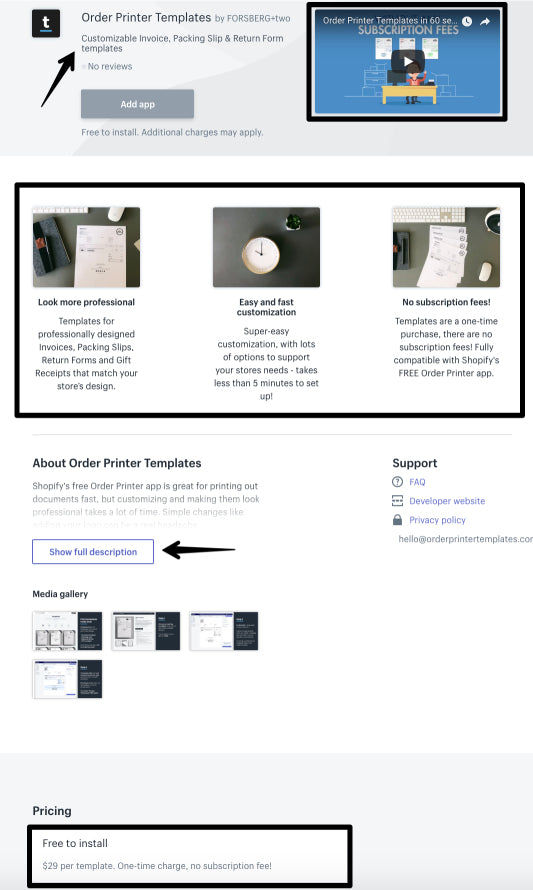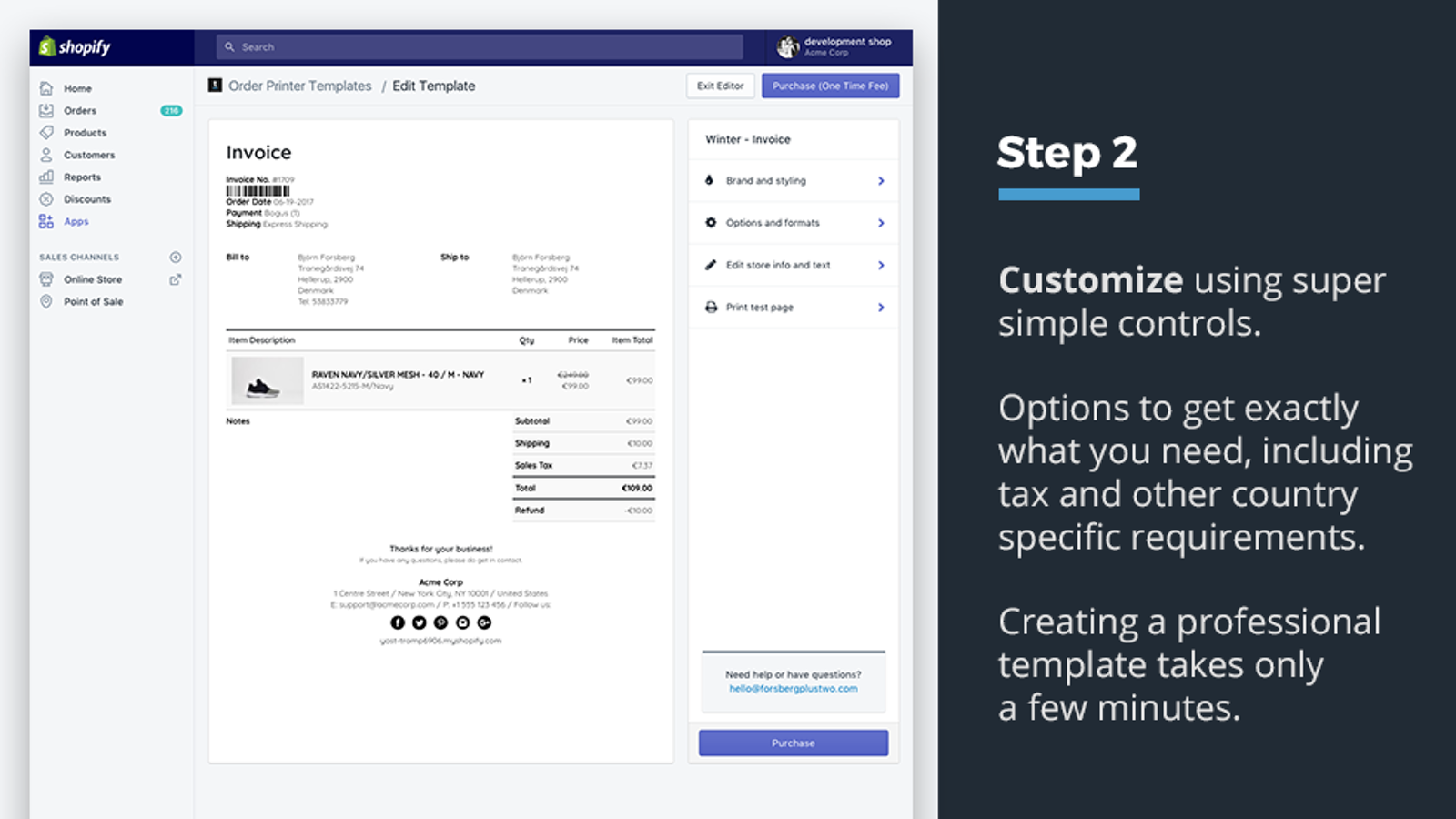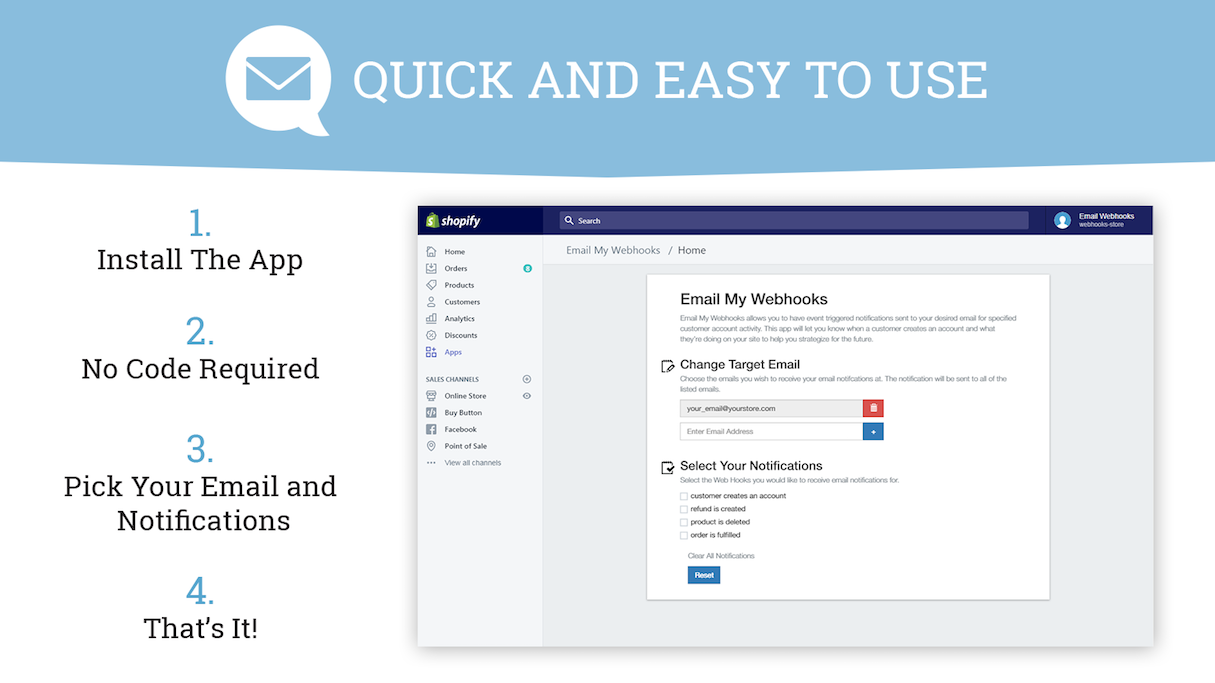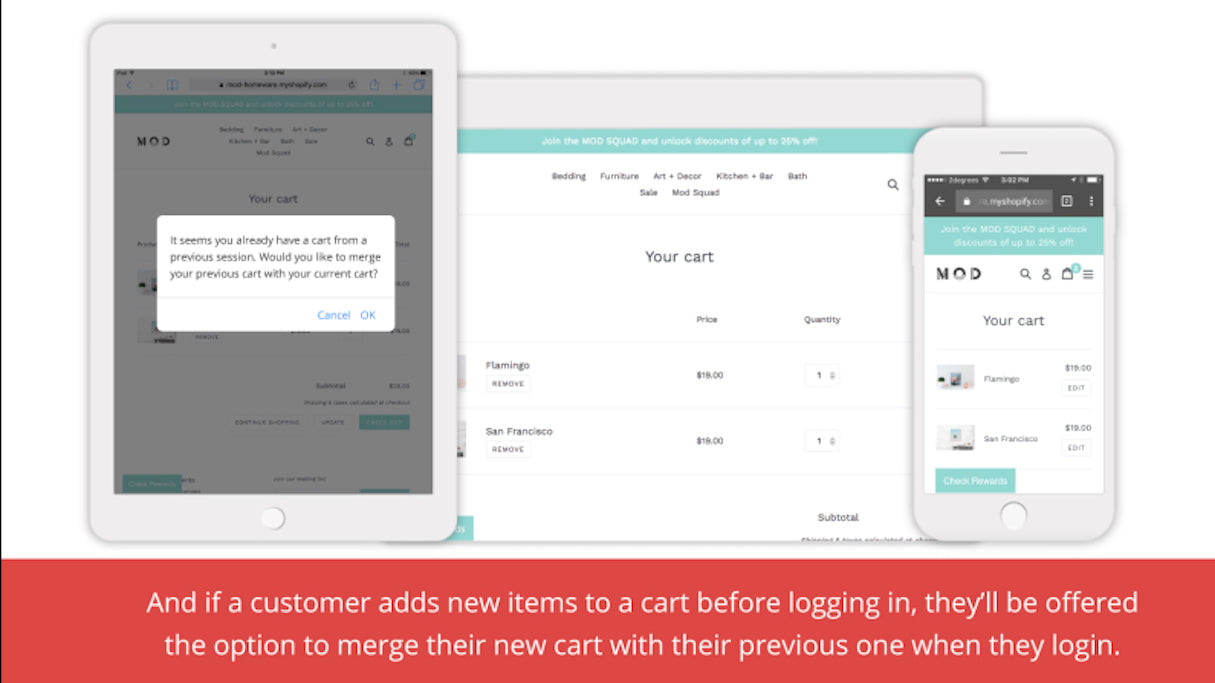Success on the Shopify App Store is largely dependent on a variety of factors beyond just building the best possible app. It’s the culmination of different strategies that position your app to engage merchants and inspire them to give your app a try.
What this means is that your branding and marketing strategy is a critical component in overall success. However, this marketing component is often overlooked, which could impact your success as a Shopify App Developer.
To better help you navigate the marketing of your app, our Apps Store Team put together four terrific documents that cover some basics of how to launch your brand new app . Ideally, these documents will not only maximize your exposure, but also help you steer clear of any pitfalls that could hinder your success. They include:
. Ideally, these documents will not only maximize your exposure, but also help you steer clear of any pitfalls that could hinder your success. They include:
- Marketing your App through Shopify
- Learn about Getting Featured on the Shopify App Store
- Marketing your App Externally
- Avoid Prohibited Actions on the App Store
Read on to gain a better understanding of how to implement these marketing strategies, and to see real examples of developers who are effectively implementing them.
1. Docs on marketing your app through Shopify
The Shopify App Store has successfully been able to attract some of the most talented developers from all over the world. As the app ecosystem continues to expand, the number of quality apps within it will also continue to grow.
This means that your branding and marketing strategy will become one of the most fundamental cornerstones to your overall success on the Shopify App Store. To help you market and position your app within this growing marketplace, we created documentation on marketing your app through Shopify.
One of the most important sub-sections of this doc is on creating an effective app listing. A successful app listing will help merchants discover, evaluate, and learn about the ways your app can help them improve their business.
When developing your app store listing, consider how you are positioning your app, and whether the branding is suitable for your target audience and is aligned with your overall marketing objectives. It’s important to remember that not all Shopify merchants are at the same stage in their businesses (or have the same needs) so it’s vital to clearly articulate how your app can help merchants in a particular stage of their business .
.
You may also like: How to Brand Your Shopify App to Earn More in the App Store.
Take a look at the following app listing to get a better understanding of the different components that make it effective:

Outside of the main description, Order Printer Templates does a fantastic job of outlining the key benefits of their app to supplement the additional information in their listing. This is extremely helpful for newer merchants who might be lacking the appropriate context upon seeing the listing for the first time. Also, the promotional video is a phenomenal resource to pique interest and lure merchants to continue reading the listing.
It’s important to remember that merchants with a limited knowledge of customizing order templates could still benefit from the app. Thus, it’s up to the developer to clearly articulate what they are offering and why it’s important to the merchant.
Also, pay particular attention to the screenshots included in the listing. This developer does a fantastic job of using screenshots to incorporate the features offered, while also previewing the user interface. It’s important to view the screenshots as a valuable tool to further entice the merchant to give your app a try.

Another example of an app that effectively uses screenshots is Order Printer Templates. They do a fantastic job of integrating their setup instructions within the actual screenshot itself, which improves the overall merchant experience and effectively showcases what the interface should look like upon installation.

Moveover, consider what Free Persistent Cart App by Collect is doing with their screenshots. They do a tremendous job of showcasing how the app is optimized for mobile devices while connecting that to a benefit of their app. As Shopify moves towards being more mobile focused, this is certainly an aspect you should highlight with your app. The enhanced app listings have a specific section dedicated to mobile screenshots which will allow you to showcase the mobile view of your app.

It’s estimated that people spend approximately 51 percent of their time on their mobile phones, as compared to 49 percent on their desktop. This means that merchants are thinking and optimizing for “mobile first,” and so should you.
Shopify’s enhanced listings have the ability to include mobile-specific screenshots, which is a great opportunity to emphasize the mobile first approach. Free Persistent Cart App by Collect does a great job of comparing the user interface on multiple mobile devices, which promotes the versatility of the app, while giving the merchant an idea of what it’ll look like for different users.
Another strategy that we cover in the documentation is initially launching your app for free. This might sound crazy but there are a variety of different benefits that come with initially launching your app at no charge.
The first is that there will be a stronger willingness for merchants to give the app a try, even if they were initially hesitant about whether or not they will need the app. Also, this essentially gives you the opportunity to do some free UX research, as you’re able to observe how users are interacting with the app. You can then use these insights to further improve the features and functionalities for future releases.
Now that you’ve established how you want to position your app within the Shopify App Store ecosystem, you’ll want to look into ways to attract new app clients through external channels , which will be covered later in this article.
, which will be covered later in this article.
2. Docs on getting your app featured on the Shopify App Store
Getting featured on the Shopify App Store is a fantastic way to gain exposure to thousands of new merchants who might not otherwise know about your app. To help you learn more about being featured, please be sure to check out our resource on getting your app featured on the app store. This document will outline the specific requirements that must be met in order for your app to be considered.
It’s important to note that getting featured might not bring you the benefits you’re looking for if your branding and app listing aren’t optimized for success.
Pro Tip: One easy way to get noticed by merchants is through your featured app banner. A great banner creates brand awareness, is eye-catching, and unique to your brand.
Here is an example of a banner that’s able to effectively encapsulate all three of these components:

Daily Deals by Droparoo does a great job of clearly displaying the brand associated to what the app does. The app also prominently features their branded name in a way that effectively associates the key feature of the app to their brand, but is also eye-catching and bold. Also, the red backdrop contrasted with the grayscale backdrop is both professional and sleek.
Also, while catchy banners are important, these branding materials should compliment your app listing and should be both informative and digestible. It’s important to remember that your app listing could get indexed on popular search engines, which makes this step even more critical.
Moreover, an effective listing should be able to educate the merchant about what the app does and how it works in the context of their Shopify shop. When writing an effective app listing, you should consider the merchant’s perspective and be able to effectively address the following questions:
- What problem does the app solve?
- How does it solve the problem?
- How does your app work with Shopify?
- How will this change the look of my store?
- How do I get started?
3. Docs on marketing your app externally
Incorporating external marketing strategies with your overall marketing plan is a critical component to maximizing your potential exposure. It’s important to remember that when merchants are trying to determine which apps to use, they also consult posts, forums, and other platforms outside of Shopify. To help you implement some traditional marketing tactics in promoting your app, we created documentation on marketing your app externally.
An example is the classic PR tactic of writing a press release. Press releases can be helpful in generating interest in your business through news articles, as well as potential interviews. Not only will this contribute to broader exposure, but can help your SEO efforts through high quality backlinks.
Also, your external marketing efforts will be an extremely effective way to re-engage merchants who might have expressed interest in your app, or to educate them beyond the limitations of an app listing. While there are several mediums you can use to reach merchants, one particularly effective one we cover in the docs is webinars.
The great thing about webinars is that they are not only effective in engaging your community, but they also act as knowledge management resources that you can share with new and existing merchants.
In addition, webinar assets can often be leveraged as a phenomenal tool to cross-promote your other marketing channels as well. For example, recorded webinars can be a fantastic tool to incorporate into an email marketing campaign or to use in your Facebook retargeting efforts.
or to use in your Facebook retargeting efforts.
For example, Bold Apps does a fantastic job of regularly facilitating interactive webinars that are effective in both educating merchants about their app and highlighting how they can maximize these features within the context of their Shopify store.
Check out the following examples of Bold’s webinar topics to get a better understanding of what they cover:


One thing you’ll notice about these webinars is the fact that they all provide helpful content that tackles common merchant issues, without the main emphasis being on the apps themselves.
In other words, the focus is on delivering valuable content to the merchant while highlighting how the app can help resolve some of these issues. Also, the benefits come from the trust and rapport that the developer is able to build. Consider how powerful that relationship could be if the app’s webinar content is the missing link that takes a merchant’s business to the next level.
4. Docs on avoiding prohibited actions on the app store
The Shopify Apps Team works diligently to preserve the integrity of the apps that are submitted to the Shopify App Store to ensure that merchants consistently receive the best app experience possible. We urge you to familiarize yourself with the sample list of prohibited actions on the app store to get a better understanding of what things to be cautious of when launching your app.
It’s no secret that there are some dark corners in the world of marketing and growth hacking. However, these gray or black hat strategies are not supported by the Shopify Apps Team. In addition to our Partner Terms of Service, we’ve outlined what to avoid in our documentation on prohibited actions on the App Store. A few examples of potential violations include:
1. Modifying your app or app listing after publication, which could result in the app no longer meeting the app store’s required checklist.
- It’s important to remember that the required checklist is a set criteria that must be adhered to at all times in order to maintain an active listing on the Shopify App Store. Modifying the app to alter its functionality or changing the app listing to inaccurately represent the features of the app can impact your eligibility to remain on the Shopify App Store.
- Actively incentivizing reviews, or encouraging reviews that might not honestly reflect a merchant’s experience of your app, is absolutely prohibited and in an extreme case could lead to disciplinary action from the apps team.
- Through offering timely support and actively engaging users, positive app reviews should naturally start to roll in organically. Also, engineering a positive merchant experience by providing timely support, developing documentation, and actively engaging in the merchant experience will not only steer you away from these prohibited actions, but will contribute to your overall success as a Shopify App Developer.
You may also like: Expert Advice on How to 10x App Support.
Make this the year your app claims a top spot!
The Shopify App Store has been a platform where several app developers have launched successful app businesses. In building a quality, merchant-focused app, following the submission guidelines, and implementing some of the strategies outlined in these new docs, you can make 2018 the year that your app business really takes off
Read more
- How to work with Metafields when building Shopify themes
- 5 Reasons Your App UI is Causing Merchants to Uninstall
- Your guide to the Fulfillment Orders API migration
- Persistence Matters: 6 Lessons From My First 6 Months on the Shopify App Store
- How to Use Future Scenario Planning in App Development
- Introducing new app billing capabilities: discounts, trial extensions, pro-rating and more
- 10 Usability Heuristics and How to Apply Them to App Design
- How to Optimize API Rate Limits
- How to Build Powerful In-App Surveys: Put the User First
- How We Built Out Our Reporting Dashboard with Shopify Polaris

